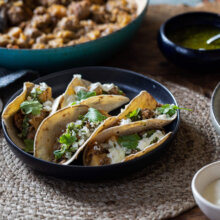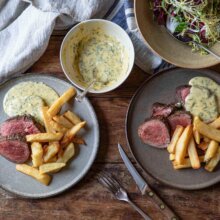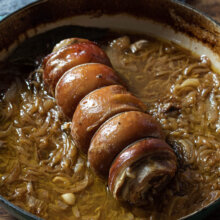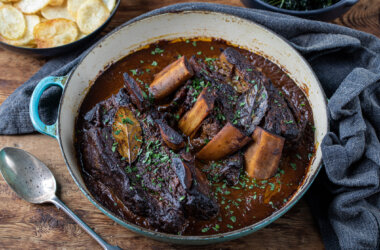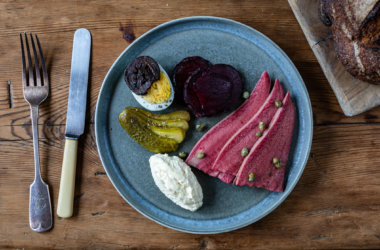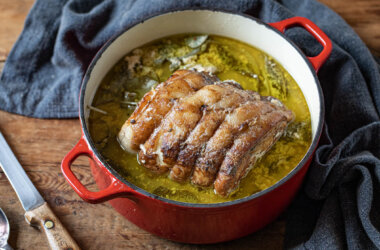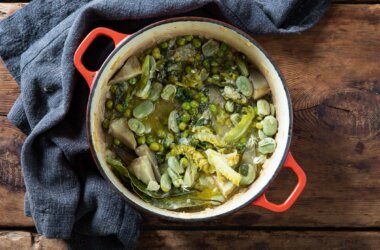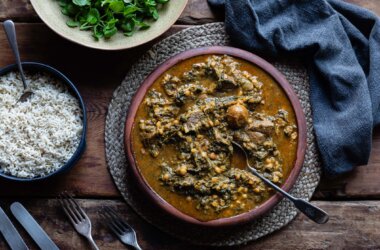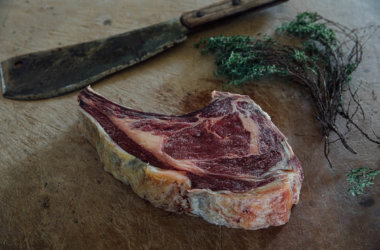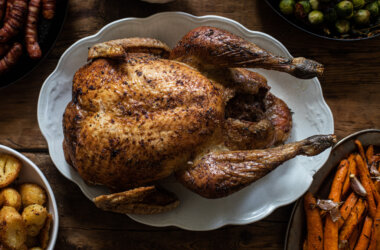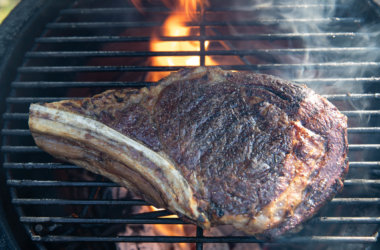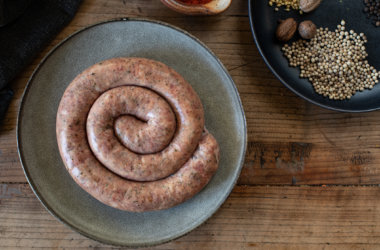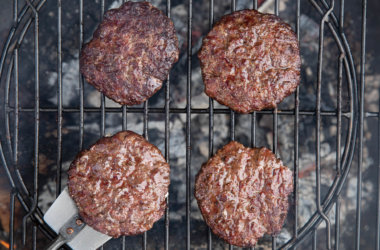What a glorious thing to behold; a rolled saddle of lamb — the meat lean, tender and blushing pink with a sumptuous coating of fat, rendered to perfection. Sure to please all those who sit round the table it adorns.
When cooked well, this cut from Swaledale Butchers is likely to provide you with the best lamb you have ever eaten, and that is no word of an exaggeration. A special word also for pommes boulangère – they are one of the most delicious things you can do with a potato. The dish came about from a desire to make use of the heat from a baker’s oven once the fires had gone out. I think we should all say a big thank you to those French bakers for their foresight and ingenuity, for they created something truly delicious!
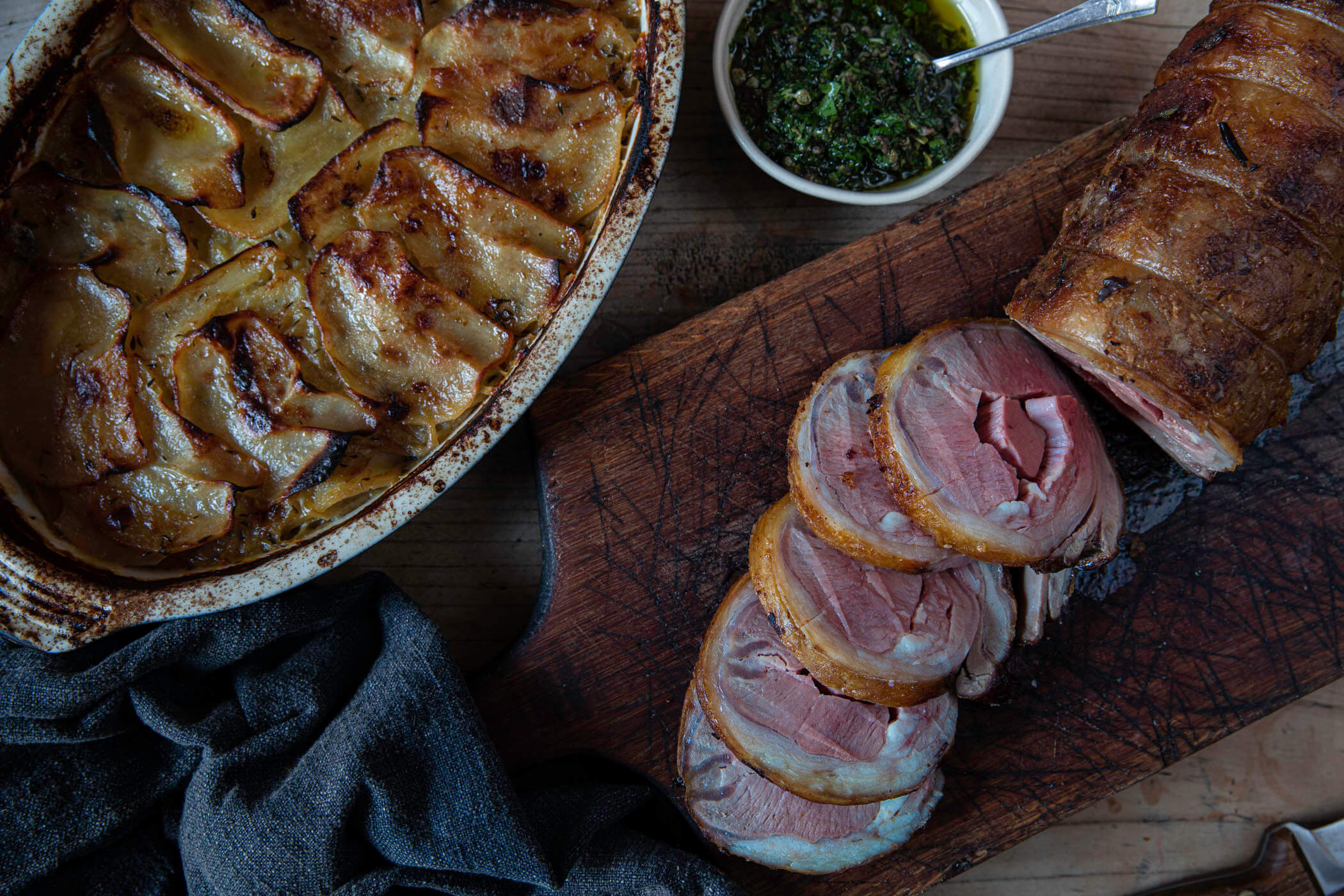
Serves 6
Ingredients
For the pommes boulangère
For the salsa verde
Shop the ingredients
Directions
- Take the lamb out of the fridge at least 4 hours before you intend to cook it. Remove it from its packaging.
- Preheat your oven to 160°C.
- We are going to spend a little bit of time trying to render the layer of fat that is protecting the meat of the saddle. So, find a pan that is big enough and set it over a medium heat. Season the lamb well with salt and place it in the pan. Allow the surface that is in contact with the pan to brown. Once achieved, rotate the joint slightly to expose another part of the saddle to the heat. Be patient here, taking time to ensure that all the fat has the chance to brown and render. Once the fat is browned, very carefully stand the saddle on its end to seal off the meat and then repeat for the other side.
- Return the saddle to a horizontal position and add rosemary and a large knob of butter to the pan. Baste the saddle with the gently frothing butter.
- Place the pan in the oven (or transfer the joint to an oven tray if the pan is not oven-proof) and set a timer for 16 minutes.
- Remove the pan from the oven and baste the saddle again, liberally. Then rotate the saddle by 90° so that the part of the joint that was in contact with the pan is now facing upwards.
- Return the pan to the oven for another 16 minutes. Then remove and baste again. Rotate the joint again, this time by 45° and return to the oven for another 16 minutes.
- Remove the pan from the oven, take the saddle out, and leave it to rest somewhere warm for at least 30 minutes.
For the potatoes:
- Add the onions, 100g of the butter, thyme, and a pinch of salt to a pan and cook on a low heat with a lid on for about half an hour, stirring intermittently. To the point that they are going soft and translucent and just offering up their natural sweetness, but not browning and disintegrating. Some people do cook them further for a Boulanger, more in the Lyonnaise style. However, I think that flavour can somewhat overpower the dish. Rather, I prefer them cooked like we are here — just sweet and totally onion-y.
- Heat up your stock in a saucepan and season with salt, to taste. It should be delicious.
- Tip the onions, potatoes and stock into a mixing bowl and mix well. Leave to sit and for everything to get to know each other for 5 minutes.
- Check the seasoning of the liquid from the potatoes and adjust if necessary. I find it easier to get the seasoning correct at this point, rather than trying to season each layer as you build it.
- In an oven-proof dish, begin layering up the potatoes, followed by a layer of onions and then potatoes and so on. Obviously, the potatoes and onions are already mixed together, so they will get a little jumbled, and that is fine. The top layer should be potatoes.
- Pour over the remaining stock from the mixing bowl so that it is just covering the potatoes. Then scatter the remaining butter in little knobs over the top.
- Cook in the oven, at the same temperature as the lamb for 1 hour and 20 minutes. Check it after an hour and top up with a little chicken stock if it is looking completely dry.
For the salsa verde:
- When chopping your ingredients for this, especially the herbs, use a very sharp knife. A blunt one will only bruise the herbs and dull their flavour.
- Combine all the ingredients in a bowl and add enough extra virgin olive oil to nearly, but not quite, cover the herbs. Plus, a pinch of salt and 1 tablespoon of vinegar. Stir together well and leave to sit for 15 minutes.
- Return to the bowl and taste for seasoning. It needs to have a zing of acidity so it may do its job of cutting through the richness of the meat and potatoes. Adjust the seasoning as necessary with either salt, a bit more vinegar or both if needed.
